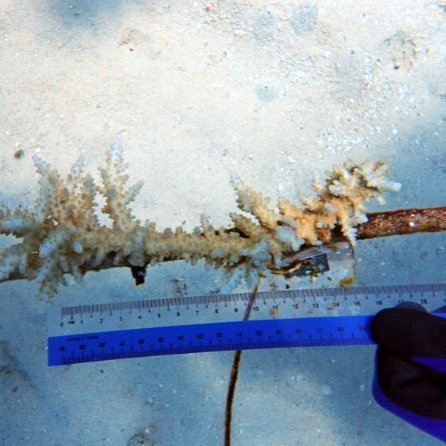BACK TO LIFE CORAL RESTORATION PROJECT IN COLLABORATION WITH CORAL CATCH
Will decided to complete the 'Back to Life' cycle by looking in to replanting corals in the shape of his artworks, to create an infrastructure of corals that will form a new reef. Will choose the Coral Catch Superwomen – the first complete female local coral restoration team in Indonesia, to help him to create this living reef structure using his art.
In an area of Indonesia where their coral reefs have suffered greatly, the Coral Catch Superwomen will re-create his artwork "Purple plasma" (named after a beautiful species of coral), using 13 mm steel, deploy it at a depth of 8 meters in the marine park around the Gili Islands, and attach 500 amount of coral fragments to the structures. The superwomen will then need to take monthly dives for the first 12 months to maintain the reef and monitor the growth.
The 'Back to Life' project will be deliberately placed away from popular reefs surrounding the Gili Islands to boost diversity. This will also draw tourists away from the fragile corals of existing reefs, where people may do more harm than good with their well-intentioned curiosity.
The project's long-term aim is to encourage new coral to colonize the structures and bring life back to the oceans. Coral Catch based in The Gili Islands, is aiming to deploy and maintain over 400 structures in 2022, creating a strong infrastructure of reefs in and around Indonesia, and with this artist collaboration we all hope to attract more support from different industry’s, brands and private individuals to help us create sustainable infrastructures of reefs for a healthier ocean and planet.
Since installing the "Back to Life" artwork in November 2022, our Coral Catch Superwomen and the research team of NGO Gili Matra Bersama have been working hard to monitor the growth of the corals attached. However, as this was nearly 500 corals, this was quite a difficult task! Rather than monitoring all corals, we chose four key genera, Acropora, Heliopora, Pocillopora and Porites, and monitored 15 corals of each. Our researchers took photos of each coral from above with a ruler in the frame to provide an exact scale. They then calculated the length, width and surface area from above using ImageJ software.
Between January 2023 and March 2023, the monitored corals have grown significantly on the "Back to Life" artwork. On average, the length of the corals increased by 16.8%, width by 14.8% and area by 36.3%. The fastest-growing genus was Acropora, with a surface area increase of 44.2%, followed by Heliopora (43.6%), Pocillopora (35.6%) and Porites (22.3%).






